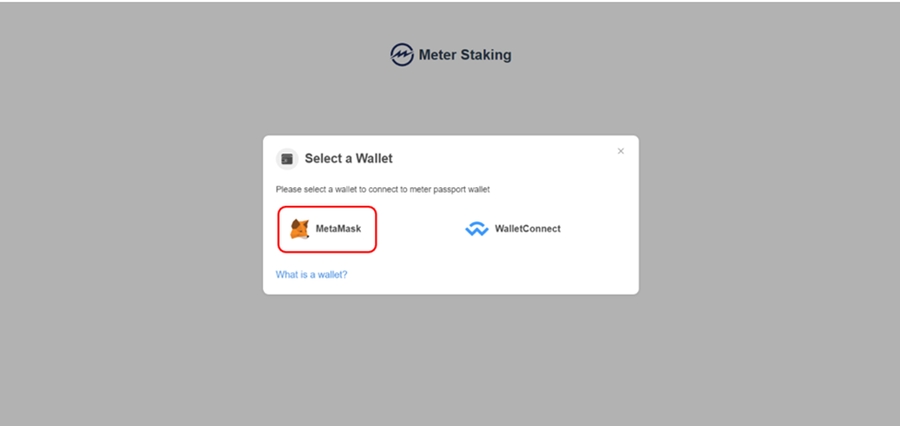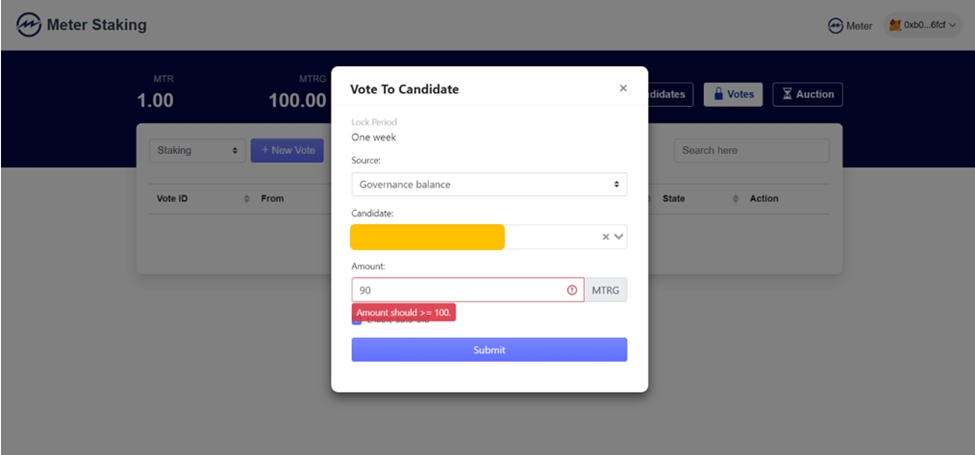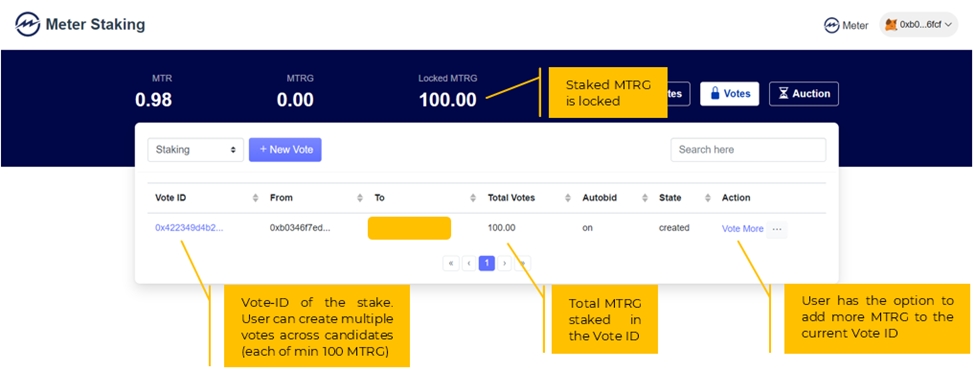How to Stake MTRG
Prerequisites:
1. Min of 100 MTRG
2. Some MTR for transaction fees
Video Tutorial
Step-by-Step Guide
Step 1
Access staking.meter.io and connect to MetaMask wallet with the requisite address


Step 2
Confirm the available balance of MTRG and MTR and choose to Vote against the Candidate shortlisted.
More details on choosing a candidate can be found here;
Choosing Candidates
Note: The requisition address should have minimum of 100 MTRG and some MTR for transaction fees
Step 3
Stake/ Delegate to the Candidate and submit the vote


Staking amount < 100 gives an error.
Note: Candidate is blanked out to keep the tutorial impartial
Step 4
Confirm the transaction in MetaMask

Note: Typical transaction costs for staking are less than 0.05 MTR
Step 5
Vote ID: Key information

Note: Meter literature also refers Vote ID as “Bucket ID”. They are interchangeable terms.

Note: Bonus votes increases the weight of the Vote ID in the staking rewards. Higher the bonus votes, more the staking rewards. The system rewards long term stakers with increasing bonus votes
Note: The screen shot was added post “add more” MTRG to bucket thus showing votes as 105 MTRG
Factors affecting Staking Rewards can be found here;
Factors affecting Staking RewardsYou have successfully staked/ delegated your MTRG.
Last updated
Was this helpful?